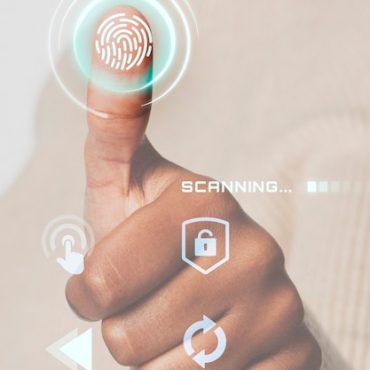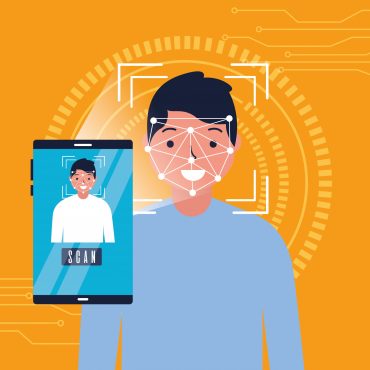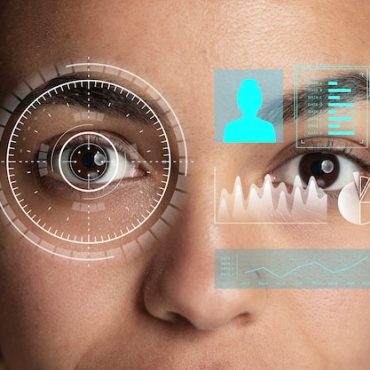-
Mail Us On
info@eternaautomation.com
-
Make a Call
+91 9150 55 65 75
- View On Map
-
Mail Us On
info@eternaautomation.com
-
Make a Call
+91 9150 55 65 75
- Contact us
Biometric Access Control Systems
- Home
- Biometric Access Control Systems
CCtv Survillence

Biometric Access Control Systems:
- Biometric access control systems utilize unique physiological or behavioral characteristics of individuals for identification and authentication purposes. These systems enhance security by accurately verifying identity, reducing reliance on traditional access methods like keys or cards. Here’s a detailed overview of various biometric technologies used in access control:
- Description: Fingerprint biometrics scans and analyzes unique patterns of ridges and valleys on a person’s fingertip.
- Working Principle: Captures and stores fingerprint data as a biometric template for comparison during authentication.
- Applications: Widely used in corporate offices, government buildings, and high-security facilities for precise access control.
- Benefits: Highly accurate and reliable, fast verification process, and minimal risk of duplication.

Fingerprint Recognition
- Description: Fingerprint biometrics scans and analyzes unique patterns of ridges and valleys on a person’s fingertip.
- Working Principle: Captures and stores fingerprint data as a biometric template for comparison during authentication.
- Applications: Widely used in corporate offices, government buildings, and high-security facilities for precise access control.
- Benefits: Highly accurate and reliable, fast verification process, and minimal risk of duplication.

Fingerprint Recognition
- Description: Fingerprint biometrics scans and analyzes unique patterns of ridges and valleys on a person’s fingertip.
- Working Principle: Captures and stores fingerprint data as a biometric template for comparison during authentication.
- Applications: Widely used in corporate offices, government buildings, and high-security facilities for precise access control.
- Benefits: Highly accurate and reliable, fast verification process, and minimal risk of duplication.
Facial Recognition

- Description: Facial biometrics identifies individuals based on unique facial features such as the distance between eyes, nose shape, and jawline.
- Working Principle: Utilizes cameras to capture facial images, extracts facial features, and matches them against stored templates.
- Applications: Used in airports, stadiums, and retail environments for seamless and contactless access control.
Facial Recognition
- Description: Facial biometrics identifies individuals based on unique facial features such as the distance between eyes, nose shape, and jawline.
- Working Principle: Utilizes cameras to capture facial images, extracts facial features, and matches them against stored templates.
- Applications: Used in airports, stadiums, and retail environments for seamless and contactless access control.


Iris Recognition:
- Description: Iris biometrics scans the unique patterns in the colored ring around the pupil of the eye.
- Working Principle: Involves near-infrared illumination to capture high-resolution iris images and compares them against stored templates.
- Applications: Commonly found in high-security installations like data centers, labs, and financial institutions.
- Benefits: Extremely accurate, non-contact verification, and resistant to forgery or spoofing.

Iris Recognition:
- Description: Iris biometrics scans the unique patterns in the colored ring around the pupil of the eye.
- Working Principle: Involves near-infrared illumination to capture high-resolution iris images and compares them against stored templates.
- Applications: Commonly found in high-security installations like data centers, labs, and financial institutions.
- Benefits: Extremely accurate, non-contact verification, and resistant to forgery or spoofing.
Palm Recognition :

- Description: Palm biometrics identifies individuals based on the unique patterns and ridges on the palm of the hand.
- Working Principle: Captures palm prints using sensors, extracts key features, and matches them with stored templates.
- Applications: Suitable for access control in hospitals, educational institutions, and manufacturing facilities.
- Benefits: Fast and hygienic, robust against environmental factors, and provides reliable authentication.
Palm Recognition :
- Description: Palm biometrics identifies individuals based on the unique patterns and ridges on the palm of the hand.
- Working Principle: Captures palm prints using sensors, extracts key features, and matches them with stored templates.
- Applications: Suitable for access control in hospitals, educational institutions, and manufacturing facilities.
- Benefits: Fast and hygienic, robust against environmental factors, and provides reliable authentication.


Retina Recognition:
- Description: Retina biometrics scans the unique patterns of blood vessels at the back of the eye.
- Working Principle: Uses low-intensity infrared light to capture retina images, which are then compared with stored templates.
- Applications: Applied in top-security environments like military installations and government agencies.
- Benefits: Extremely secure, precise identification, and resistant to external environmental changes.

Retina Recognition :
- Description: Retina biometrics scans the unique patterns of blood vessels at the back of the eye.
- Working Principle: Uses low-intensity infrared light to capture retina images, which are then compared with stored templates.
- Applications: Applied in top-security environments like military installations and government agencies.
- Benefits: Extremely secure, precise identification, and resistant to external environmental changes.
RFID Card Access :

- Description: Uses radio frequency identification (RFID) technology embedded in cards for access control.
- Working Principle: RFID cards emit radio waves, read by RFID readers for authentication.
- Applications: Office buildings, hotels, public transport.
- Benefits: Contactless, scalable, cost-effective.
RFID Card Access :
- Description: Uses radio frequency identification (RFID) technology embedded in cards for access control.
- Working Principle: RFID cards emit radio waves, read by RFID readers for authentication.
- Applications: Office buildings, hotels, public transport.
- Benefits: Contactless, scalable, cost-effective.

